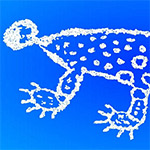 In general, it proves to be rather awkward (or even impossible) to establish the exact species of biomorphic images depicted at Toro Muerto (Peru), and thus this is even more problematic for conflations of two or more animals. In this study I argue that at Toro Muerto several petroglyphs of quadrupeds may well depict a specific conflation. With a number of illustrations I will demonstrate that this hypothesis is not far-fetched at all.
In general, it proves to be rather awkward (or even impossible) to establish the exact species of biomorphic images depicted at Toro Muerto (Peru), and thus this is even more problematic for conflations of two or more animals. In this study I argue that at Toro Muerto several petroglyphs of quadrupeds may well depict a specific conflation. With a number of illustrations I will demonstrate that this hypothesis is not far-fetched at all.
By Maarten van Hoek
*
*
The “Camelines” of Toro Muerto
Majes Valley, Peru
*
Maarten van Hoek
August – 2023 (revised edition)
*
*
Introduction
Toro Muerto – located in the Central Majes Valley of southern Peru – is the biggest rock art site of the Desert Andes and probably also of South America, with probably about 2500 to possibly 3000+ decorated boulders with altogether thousands of petroglyphs depicting a large variety of biomorphic figures, abstract motifs and various confusing and/or enigmatic petroglyphs. Speaking of “confusing”, I realise that rock art researchers who are familiar with the rock art repertoire at Toro Muerto will be puzzled by the title of this study, as they will not have heard of petroglyphs of “Camelines” before. The explanation is quite simple. In fact no-one has. I invented this label in order to shed light on an indeed confusing, and therefore (in my opinion) often misinterpreted type of zoomorphic rock art image of the Majes Rock Art Style (MRAS in this study).
In this study I argue that at Toro Muerto several petroglyphs of quadrupeds may well depict conflations of camelids and felines; or rather, when those words are combined: Camelines. With a number of illustrations I will demonstrate that this hypothesis is not far-fetched at all, although it proves to be rather awkward in general, (sometimes even impossible) to establish the exact species of all biomorphic images depicted at Toro Muerto, including purported felines and camelids, and conflations of two or more animals. Therefore, I have to admit that in some cases it is rather obscure exactly what species of mammal has been depicted in Majes rock art. Only the manufacturer knew exactly what animal(s) (s)he had in mind, especially when hybrid images of two or more biomorphs were made. This uncertainty brings me to discuss the hazards of interpretation of rock art images.
*
Interpretation Issues
A small selection of examples will show how hazardous the interpretation of rock art images can be. Hans Dietrich Disselhoff (1971: Abb. 4a and 4b) was probably the first explorer who recorded the petroglyphs on the rather small and inconspicuous Boulder TM-Cd-015 (all Boulder-labels starting with TM are located at Toro Muerto). He only recorded two anthropomorphic figures on that panel at that time (Elements 1 and 2 in Figure 1A). He did not notice the zoomorphic figure further to the left (3 in Figure 1A), because at that time the boulder was largely covered by sand. This zoomorph was noticed by Núñez Jiménez (1986: Fig. drawing 2317 and photo 2318) but – again understandably – interpreted as an “ave”, a bird, because also Núñez Jiménez also saw the boulder partially covered with sand (Figure 1C), like I did, the first time I saw this boulder (Figure 1A). However, when uncovering a bit of the stone, I noticed a clearly indicated front leg (Figure 1B). It proved that there was no “bird” image (not having a front leg [1 in Figure 1C; not having two hind legs [2 in Figure 1C] and not having a short tail [3 in Figure 1C]). Ultimately, a photograph by the “Proyecto Arqueológico Toro Muerto” (who excavated the whole panel) revealed that the “bird” actually was a camelid with clearly indicated hooves (sometimes spelled as: hoofs) (arrows in Figure 1D).
Figure 1. Petroglyphs on Boulder TM-Cd-015 (explanation in the text). Photographs A and B and drawing C © by Maarten van Hoek, C: based on the drawing by Núñez Jiménez (1986: Fig. 2317). Photograph D: by “Proyecto Arqueológico Toro Muerto”, reproduced here with the kind permission of Karolina Juszczyk.
Another example to illustrate the difficulties in interpretating a quadruped concerns the complex petroglyph of a quadruped (Figure 2A) on Boulder TM-NNx-024, located at Sector-X at the extreme upper end of Toro Muerto (see Van Hoek 2022a for more [location] details). At first sight it looks like an outlined quadruped with some kind of antlers. It thus might represent a deer. However, in my opinion, at a later stage another (?) manufacturer outlined an existing simple match-stick petroglyph of a camelid (Figure 2B), resulting in the complex image we now see (Figure 2C). Therefore, I interpret this petroglyph as a match-stick camelid that was transformed in an outlined deer. However, apart from the subjective graphical “evidence” presented here, I have no other proof for my suggestion.
If indeed it was the intention to change the camelid into a deer, then it might indicate that perhaps some other – up to now? – enigmatic petroglyphs of quadrupeds at Toro Muerto might also represent deer. It concerns petroglyphs like the match-stick example on Panel TM-NNx-001B, Sector-X, shown in Figure 3A, and the outlined example on Boulder TM-Cd-029, shown in Figure 3B-1. Boulder TM-Cd-029 also shows the image of a match-stick quadruped (importantly, each foot having three drooping digits!) with the longest spiral-tail that I have seen in the MRAS. It might even be a Cameline because of this tail (Figure 3B-2). Apart from two more quadrupeds (B-3), there is one simple petroglyph on this panel (B-4) that – in analogy with a similar petroglyph on Boulder TM-Cc-005 – is once suggested to depict a human bone, a “tibia” (Scaffidi 2018). However, in an earlier publication (Van Hoek 2023a: 7; Fig. 5) I rejected her interpretation of the purported “tibia” petroglyph on Boulder TM-Cc-005 (see Figure 18). Every experienced researcher of the MRAS will admit that – in general – any interpretation is too often too hazardous, also regarding this specific petroglyph.
Figure 2. Petroglyph of a complex quadruped on Boulder TM-NNx-024, Sector-X (explanation in the text). Drawings © by Maarten van Hoek, based on a photograph by Lubetima Te Informa (Facebook).
Figure 3. A: Petroglyph on Panel TM-NNx-001B, Sector-X. Photograph by the “Proyecto Arqueológico Toro Muerto”, reproduced here with the kind permission of Karolina Juszczyk. B: Petroglyphs on Boulder TM-Cd-029. Photograph © by Maarten van Hoek.
Also hard to interpret are the rare quadrupeds with grossly deformed bodies or body-parts, like the camelid on Boulder TM-Db-010 that shows an extremely long, single line body of 50 cm in length (and four, relatively very short legs [6.5 cm] all featuring two hooves). This quadruped (most likely a camelid) hovers over a row of six camelid petroglyphs (one being a young in the suckling position). A few petroglyphs of quadrupeds show relatively large heads, or – like the petroglyph on Boulder TM-Cd-029 – an (extremely) long spiral tail. On Panel TM-Bs-004A is a match stick petroglyph depicting a camelid (clearly showing two hooves at both [too long] legs), having an extremely long tail as well. Also the feline petroglyph on Panel TM-Bb-009A (Van Hoek 2021a: Fig. 7) has a tail that is (relatively) too long. At least one anthropomorphic figure (on Panel TM-Be-054B) also has a very long (fully pecked) body with (relatively) two extremely small arms (in the “surrendering” position) and a relatively small head (Figure 4B-3). Also notice the Cameline with three splayed and drooping digits on this panel (Element 1). Quadrupeds with three splayed digits occur at other panels (Figures 4A and B (at Toro Muerto) and C (at Illomas, Manga] and Figure 9A).
Figure 4. Quadrupeds (camelids?) of the MRAS featuring three splayed digits. A and B: Photographs © by Maarten van Hoek; C: Photograph © by Grupo Andaray.
*
Defining MRAS Camelids
In order to be able to recognise petroglyphs as Camelines, it will be necessary to define the “standard” images of the camelid and of the feline, starting with the camelids, which are predominantly drawn in a rectilinear style and always fully laterally. In an earlier paper I already established that the image of the camelid in the MRAS is enormously varied (Van Hoek 2022b). There may be recognised three general types regarding the layout (although, of course, mixtures of those three categories also occur). There are match-stick petroglyphs of camelids (the majority); examples with thick, fully pecked, solid bodies (labelled Block-Body Camelids in this study), and outlined examples, often with interior decoration (dots, circles etc.). I do not know of camelid petroglyphs in the MRAS showing their long fur, but I have seen a photograph of two camelid petroglyphs at Santa Rosa de Tastil, NW Argentina, that subtly but clearly show the long fur of hair hanging from the belly-line (Raffino 1967: Lámina IV – ariba).
The graphical characteristics of the “standard” camelid are the following (mind you, there often are notable exceptions, mixtures and variations). Petroglyphs of camelids in the MRAS often have a rather long neck and long legs, all mainly vertically orientated, but especially the legs, like the example on an almost vertical panel of Boulder TM-Be-083 (Figure 5A). Importantly, at least one camelid (with young) on the upper surface of Boulder TM-Be-083 has three splayed digits pointing downwards from its front leg (not illustrated in this study).
“Standard” camelid petroglyphs have a short tail that is mainly depicted in the drooping position (although sometimes the tail may be held [diagonally] upright). A camelid petroglyph has four or (more often) two legs. Each leg typically ends in two hooves that are horizontally orientated (sometimes diagonally). However, many rock art images of camelids often show no hooves or digits at all, like the clearly female camelid and her young on Boulder TM-Be-066 (Figure 6), or just one horizontally orientated hoof.
Figure 5. Petroglyphs on Boulder TM-Be-083. A: “Standard” image of a (female) camelid with young. B: A group of match-stick camelids. One (1) being a female with a young (2) in the suckling position and a male (3) in a characteristic copulating position. Petroglyphs 4 and 5 seem to depict dogs or foxes. Drawing (at a different scale than Figure B) and photograph © by Maarten van Hoek.
Figure 6. Petroglyphs on Panel TM-Be-066A, showing a large female camelid with a short tail, massive legs, but no hooves (an anthropomorphic figure stands in front of the female camelid; partially cut off in the photo). Note the young (with hoofs!) in the suckling position. Photograph © by Maarten van Hoek.
The head (always depicted fully laterally as well) often has two short, (more or less) parallel lines (vertically, diagonally or horizontally orientated) representing the ears, and two horizontally depicted lines representing the open mouth (sometimes there is only one line representing the closed mouth; sometimes there are three lines; one of the three possibly indicating the tongue. Sometimes the “open” mouth is blocked off by a small curved line.
Camelids may be male (Van Hoek 2012: Fig. 69 and 94) or female (Van Hoek 2012: Figs 58 and 78), which sometimes can be assessed (only) by the position they have been depicted in (see for instance Figure 5B-3). However, in general the presence of sexual organs is extremely rare in the MRAS (and in Desert Andes rock art as well).
Also (again very rare) copulation scenes involving camelids have been recorded in the MRAS (Van Hoek 2012: Figs 168 to 172 [please note that my captions on that page are inconsistent]). Even pregnant camelids seem to have been depicted in Desert Andes rock art (Van Hoek 2012: 102), and also the result of copulation (their young) is an indication of camelids being involved, especially when their young have been depicted in the characteristic suckling position (Figures 5, 6 and 7A) (Van Hoek 2012: 119; Jennings, Van Hoek et al. 2019: Fig. 17A).
Other indications that we are dealing with camelids are the panels that show the animals in the characteristic rows (representing caravans), especially when leashed together. Other clues are anthropomorphs holding a camelid on leash, and groups of camelids enclosed by a line that may represent a corral (Van Hoek 2022c: Figs 30 and 31; and – representing [in my opinion] rare animated corrals – Figs 32 and 33).
Even rarer in the MRAS are instances where camelids are drawn carrying a cargo. A possible example – accompanied by her young in the suckling position – has been recorded on Boulder TM-Bg-009 at Toro Muerto (Figure 7A). On Boulder PAJ-034 at Illomas is a scene where an anthropomorph has a camelid on leash, while the animal seems to carry a pack (Figure 7B), added at a later stage? (Jennings, Van Hoek et al. 2019: Fig. 17B).
Figure 7. A: Petroglyphs on Boulder TM-Bg-009, showing a larger female camelid with an (outlined) pack and her young in the suckling position. Photograph © by Maarten van Hoek. B: Petroglyphs on Boulder PAJ-034 at Illomas, Manga Drainage, showing one camelid on leash, while carrying an (added?) fully pecked pack. Photograph © by Grupo Andaray.
One petroglyph – on Boulder TM-Nn-006 – represents a unique scene of a camelid on leash tied to an object what seems to be a tethering pole (Van Hoek 2021b: Fig. 38). Other rare MRAS petroglyphs show a leash from a camelid ending in a ring (a tethering object, or a loop for a pole perhaps?), for instance on Boulder TM-Cd-032 at Toro Muerto, and also at Quilcapampa in the Sihuas Valley (Van Hoek 2021b: large blue arrow in Fig. 20). Finally, at Cerro Jaguay (a rock art site 26 km due south of the city of Arequipa and thus outside the MRAS-Sphere) is a petroglyph of a quadruped (a camelid?) with a leash attached to what seems to be a fence (Valle Alvarez and Gamboa Tomimaya 2018: 187: Fig. 36).
Finally, it is possible (but it is by no means certain) that also the iconic Majes “Spitter” in fact depicts or symbolises the camelid. Not only are they often (but not always) “spitting” (although the purported “spit” may also symbolise sound [see Van Hoek 2022d]), they also have a short, upturned tail.
*
Defining MRAS Felines
In an earlier paper I already established that also the image of the feline in the MRAS is enormously varied (Van Hoek 2021a). In essence, images of felines in MRAS are curvilinear. In contrast with the (mainly rectilinear) camelids, most of the feline petroglyphs of the Central Majes Valley have been drawn in outline and almost invariably have internal body decoration (dots, circles, short lines etc.). Match-stick examples of felines are extremely rare and are moreover often ambiguous. One possible example is found on Boulder TM-Bf-061 (Figure 8). It seems to depicts a unique scene of a feline (?) preying on a dead bird (the drawing by Núñez Jiménez [1986: Fig. 2540]) is too inaccurate to recognise the scene). Felines that have fully pecked, solid bodies are also rare and also are often dubious, especially regarding the subject of this study: the Cameline.
Figure 8. Petroglyphs on Boulder TM-Bf-061. Photograph © by Maarten van Hoek.
The outlined (sometimes obliterated) feline head is predominantly drawn in “twisted perspective”, which means that the laterally depicted feline has a frontally depicted head with two eyes, although examples with only one eye also occur, for instance on Boulder TM-Bb-053 (Van Hoek 2021a: Fig. 18; see also Fig. 19 – inset A). Fully laterally depicted felines (thus always having one eye only) are also rare in the MRAS and may even be of the Formative Period. Petroglyphs of felines often show whiskers and sometimes an (open) mouth with teeth (only in one case – so far – a fang is shown). Often the specific (triangular) feline-ears are quite defining.
Petroglyphs of felines almost invariably have a long tail (although one [unfinished?] example – on Boulder TM-Da-008 at Toro Muerto – seems to have a very short, bulbous tail [and no front leg]; see also the short tail of the feline illustrated in Van Hoek 2021a: Fig. 8). The long tail is normally positioned hovering over the bended bottom or back of the animal, although many other positions have been recorded (see numerous examples in Van Hoek 2021a). Moreover, several felines have an (often slightly curved) tail that sometimes ends in a curl or spiral, although other zoomorphs also may have a spiral-tail (like the possible monkey petroglyph on Boulder TM-Fx-005). The usually short legs of the feline (often internally decorated as well) sometimes show claws or mainly – yet less menacing – digits (ranging from zero to five or more digits).
Finally, also noteworthy is my hypothesis that felines may have been kept as (sacred?) pets by certain Majes individuals (like elite-chiefs and/or shamans?). On Panel TM-Ba-014A there is a petroglyph of a feline that is physically attached with a line (a leash?) to a large Mummy Bundle petroglyph; a grave good? On the same panel is a petroglyph of a feline with a possible collar and a short leash; a domesticated cat? (Van Hoek 2021: Fig. 27-inset).
*
Other MRAS Conflations
Although this study focusses on Camelines (camelid-feline amalgamations), it is worthwhile to mention that a petroglyph on Boulder TM-Dx-031 seems to represent a conflation of a bird (front half) and a feline (the leg and the back half) (Van Hoek 2021a: Fig. 20). In another paper I also discussed the possible conflations between quadrupeds (possibly camelids) and birds (Van Hoek 2023a) as well as possible conflations of felines and anthropomorphs, resulting in rare amalgamations called therianthropes.
*
Camelines
In essence Camelines in the MRAS are images of quadrupeds that have both (yet mainly major) camelid properties as well as (minor) feline characteristics, but unfortunately often presented in such a confusing mixture that it is hard to tell what exactly the image depict: a camelid or a feline. For that reason I invented a hopefully more appropriate term: the Cameline; an intentional (?) conflation of a camelid and a feline. Another problem is the uncertainty whether Camelines have been manufactured by the same hand at the same time or not. In several cases I am inclined to accept that an image has been changed by another manufacturer at a later stage by adding feline properties (a longer tail and/or extra digits) to an existing camelid petroglyph (but I have no direct evidence that supports my idea).
The most convincing feature confirming that the Cameline (almost invariably showing a rather long neck, a property which is almost always absent in felines) is in essence a camelid, is the fact that most Camelines – at least most of the examples that I have “recognised” in the MRAS – are rectilinear, and – moreover – of the solidly pecked Block-Body Type (there are only very few exceptions). Besides this rectilinear camelid-character of the Cameline there are also two specific elements that seem to confirm that feline properties have been manufactured or added to a camelid image. It concerns the long (often feline-looking) tail and the legs with more than two digits (suggesting feline-claws). Also – and especially- a long curled or spiral-like tail seems to refer to the feline part. Also petroglyphs of Block-Body quadrupeds with five (or more!) digits at the end of one or more legs more likely represent Camelines. However, in rock art discussions illustrations speak louder than words and therefore I will now discuss and illustrate some petroglyphs that I consider to represent Camelines.
First of all, there are petroglyphs of quadrupeds in the MRAS that look like camelids (especially their heads and general layout) but that have three splayed and drooping digits (thus not really showing hooves). Examples of such quadrupeds – yet all having a long (feline?) tail – have been recorded by me at Toro Muerto, for instance on Boulders / Panels TM-Be-075 (see Figure 4A); TM-Be-054B (see Figure 4B); TM-Da-030 (Figure 9A) and TM-Db-013 (Figure 9B-1). Importantly, also felines in the MRAS have often three (splayed and drooping) digits at each leg (Van Hoek 2021a). Therefore, are those confusing images felines, or Camelines, perhaps? However, also the more obvious camelid petroglyph on Boulder PAJ-036 at the rock art site of Illomas in the Manga Drainage further west, seems to have three splayed and drooping digits at each of the four legs, but this camelid has no unambiguous feline properties (see Figure 4C). This confusion brings me to discuss more convincing petroglyphs of Camelines in the MRAS.
Figure 9. A: Part of Boulder TM-Da-030, and B: Boulder TM-Db-013. Photographs © by Maarten van Hoek.
Indeed, more convincing are the Cameline petroglyphs that have five splayed and drooping digits at each leg, like the example on Boulder TM-Be-009 (Figure 10), where the now flexed tail may have later been extended and digits may have been added. Enigmatic is the “closed” mouth that originally might have been an open mouth that has possibly been blocked off. It is uncertain if this has been done to enhance the feline aspect.
A similar petroglyph is found on Boulder TM-Be-027 (Figure 11A), where Petroglyph-1 has two legs, each with five digits, and a longer than normal (extended?) tail. Between the legs is a smaller Cameline (or camelid ?) with a longer than normal (extended?) tail (Petroglyph-2). It might depict a young, although it is not in the characteristic suckling position. Hovering over Petroglyph-1 is an image of what might be regarded – because of its much smaller size – to depict a young Cameline (Petroglyph-3). It has multiple digits and a long curved tail.
A nearby boulder (TM-Be-060) shows a group of small match-stick camelids and a large Camelid (this petroglyph was not recognised as a conflation by Pozzi Escot 2009: Fig. 10), which has a tail that is too long to be a camelid tail, and – most importantly – at least six digits at its front leg and possibly five at its hind leg (Figure 11B). Drawing more than the usual digits (in this case six instead of five) may have been an intentional choice of the manufacturer, possibly in order to increase the power of the feline. A similar instance has been recorded in Bolivia, where a petroglyph of an actual feline also has six digits at each leg, and apparently three (?) tails (see Figure 17B).
Figure 10. Petroglyph on Boulder TM-Be-009. Photograph © by Maarten van Hoek.
Boulder TM-Be-035 has a large number of small quadrupeds (probably all depicting camelids: indicated with yellow dots in Figure 12A) and a large Cameline (marked 1) with at least four digits at its front leg and a rather long, straight tail. Also on Panel TM-Be-043A are many quadrupeds (mainly camelids) and at least one Cameline with a long tail and four digits at its hind leg (Figure 12B).
Boulder TM-Cd-036 features a Cameline with two legs having clearly indicated, forward pointing hooves, but also a long downwards curving tail (Figure 13). Núñez Jiménez illustrates a Cameline with a long tail, yet held on leash by an anthropomorphic figure (1986: Fig. 2415) and a Cameline with a clearly developed spiral-tail (1986: Fig. 2417). Unfortunately I have no photographs of those two panels and it is thus possible that the drawings by Núñez Jiménez are incorrect, because I have convincingly demonstrated that about 25% of his illustrations is inaccurate or incorrect (Van Hoek 2011). Núñez Jiménez labels a petroglyph on Boulder TM-Dx-019 as a camelid (auquénido), despite the long feline-looking spiral tail (1986: Drawing 2701 and photo 2702).
Figure 11. A: Petroglyph on Boulder TM-Be-027. Photograph © by Maarten van Hoek. B: Boulder TM-Be-060. Photograph © by Rainer Hostnig.
Figure 12. A: Boulder TM-Be-035; B: Part of Panel TM-Be-043A. Photographs © by Maarten van Hoek.
On Panel TM-Be-044B are again several quadrupeds (Petroglyph-1 having a possible “Trophy” Head in its mouth) that have a long, curved tail and multiple digits from their legs (Petroglyphs 1 to 4 in Figure 14.). They might be Camelines (or perhaps “Felids” [Feline-Camelids]).
Although it must now be clear that petroglyphs of Camelines seem to have been concentrated in Sector TM-Be at Toro Muerto (see Appendix and Figure 22), a few isolated images of Camelines also are found at other Sectors at Toro Muerto (and even beyond Toro Muerto, as we shall see). For instance on Boulder TM-Da-030 is a Cameline (?) with a long tail, three digits at each leg and an open mouth (see Figure 9A; note the eye-motif within the fully pecked body). Boulder TM-Db-013 (see Figure 9B) shows a large Cameline with a very long, downwards curved tail with a modest spiral at the end, and legs that (all?) seem to have three incised, vertically arranged digits (added later?). One “final” petroglyph of a Cameline (there may well be more examples at Toro Muerto overlooked by me) is found on Boulder TM-Cc-005, but this example will be discussed further on.
Figure 13. Boulder TM-Cd-036. Photograph and drawing © by Maarten van Hoek.
Figure 14. Petroglyphs on Panel TM-Be-044B. Photographs © by Maarten van Hoek.
An extremely low number of petroglyphs at other rock art sites may still depict the same type of Cameline. Of a completely different layout however – especially when compared with the Block Body style at Toro Muerto – is the petroglyph of a possible Cameline photographed by Stephen Berquist at Quilcapampa in the Sihuas Valley, which earlier I (not Stephen) described as: “… the outlined, faintly decorated quadruped (a camelid? with feline-like tail?) on Panel B5 at Section B of Sector 7 (Figure 64) is enormous; it is almost life size …” (Van Hoek 2021: 66; Fig. 64-B5; note my hesitation to define the species).
Although also Alto de Pitis has several petroglyphs of camelids (yet less than Toro Muerto), only very few examples seem to depict Camelines. The typical Block-Body Camelid type occurs only very sporadically at Alto de Pitis, which is dominated by match-stick camelids (see Figure 15C) and outlined and internally decorated types. A few possible Block-Body Camelids appear on Boulder AP3-130 and near the top of Panel AP3-114A is one other example (with two legs, each possibly ending in three splayed, drooping digits). On Panel AP3-161 is a possible outlined quadruped with internal decoration and with multiple digits and a long tail; a possible Cameline.
Figure 15. Camelid petroglyphs at Alto de Pitis. Photographs © by Maarten van Hoek.
The only rather convincing Cameline at Alto de Pitis is the petroglyph of a quadruped with a “Trophy” Head (added later?) on Boulder AP4-017 (Figure 16B). An illustration of this image was probably first published by archaeologist Paúl Álvarez Zeballos (2009: 18), but unfortunately it concerns a photo of the image that had been chalked-in by him (Figure 16A).
Chalking-in of petroglyphs is not only completely unacceptable (and there are many photos by Álvarez Zeballos [2009] that show chalk lines), but Álvarez Zeballos also chalked-in the zoomorph incorrectly. Thus he not only forced his reading onto the observer of his photo, he also missed the long feline-like tail that clearly hovers over the back of the animal and which may have been added to a shorter camelid tail (the end no longer discernible). Álvarez Zeballos also missed the two clearly visible camelid hooves at the front leg (the possible hooves at the hind leg are too much blurred). Because of the hooves, the long neck and the feline tail, I consider this petroglyph to represent a Cameline.
Figure 16. Petroglyph on Panel AP4-017A at Alto de Pitis. A: Drawing based on the incorrectly chalked-in photo by academic archaeologist Paúl Álvarez Zeballos (2009). Drawing and photograph “B” © by Maarten van Hoek.
Further west is the rock art site of Illomas. On Boulder PAJ-008 is a quadruped of the Block-Body Type with the layout of a camelid, but with a long tail and with five digits at each leg (Figure 17; Jennings, Van Hoek et al. 2019: Fig. 23). On Boulder PAJ-172 may be a similar Cameline petroglyph, but the photo that I have available (made by Illomas Project team member Ronald San Miguel Fernández) was too much blurred to be correctly interpretable by me. Finally, much further west – in the Caravelí Drainage – is the important rock art site of Río Caravelí, where some petroglyphs of quadrupeds may depict Camelines (Van Hoek 2022c: 20; 43; Fig. 51).
Figure 17. A: Cameline on Boulder PAJ-008 at Illomas, Manga Drainage. Photograph © by Justin Jennings. B: Petroglyph from Impora, Bolivia. Drawing © by Maarten van Hoek, based on a photo by Turismo Camargo Bolivia.
*
The Cameline Controversy
In the discussion above (and in many other publications) I have often expressed my doubt about my own interpretations and also about interpretations by other researchers. Therefore again, also some of (or all?) the rock art images that I have subjectively labelled “Camelines” in this study, may have been misinterpreted by me. It proves that interpretation is often an issue. One of the controversial petroglyphs of a purported Cameline regarding interpretation, is the example that I already announced that would still be discussed. It concerns the example on Boulder TM-Cc-005 (Figure 18). Despite the fact that this specific petroglyph is claimed to represent a feline by researchers several times, in my mind it is almost certainly that the quadruped in question depicts a Cameline. I will now explain this specific image, which exemplifies a controversy.
Figure 18. Boulder TM-Cc-005. Photographs © by Maarten van Hoek.
The first researcher who illustrated the possible Cameline on Boulder TM-Cc-005 was Núñez Jiménez, without offering an explanation or explanatory caption (1986: Fig. 2468). Much later, in 2010, I illustrated and briefly described the possible Cameline on Boulder TM-Cc-005 stating (Van Hoek 2010: 22; Fig. 28; my emphases and [addition]): “Less problematic [referring to the “Trophy” Head] is the example on panel Cc-005 again featuring a quadruped that looks to the left and is depicted in profile. Remarkable are the two massive, fully pecked legs.”. As you can read, there was no question of labelling the zoomorph as a feline, nor any reason to even think of a possible feline.
Yet, in 2018 Scaffidi published her thesis (referring to my 2010-paper), in which she included a photo of the Cameline on Boulder TM-Cc-005 with a caption claiming that this petroglyph was a feline. Thus, in her mind the quadruped unmistakeably represented a feline (Scaffidi 2018: 342). However, in my 2010-paper I label the petroglyph as a “quadruped”; not as a feline. Why referring to my 2010-paper and ignoring a safer “quadruped” interpretation?
Despite the fact that I labelled this petroglyph on Boulder TM-Cc-005 as a quadruped, it was again labelled as a feline by bio-archaeologists Prof. Beth Scaffidi and Prof. Tiffiny Tung in their paper published in 2020, when they claim (Scaffidi and Tung 2020: 5; also referring to my 2010-paper) that the rock art images at Toro Muerto express an obsession with aggression (which is definitely not true) and that various images depict a halfhuman, half-animal figure said to hold a “Trophy” Head by the hair (also not true). They also claimed that their Fig. 3b depicts a cat. However, their Fig. 3b does not show a cat at all, but instead it shows an incorrect rendering of an anthropomorphic petroglyph from Alto de Pitis. Nowhere in their 2020-paper is any petroglyph of a cat to be seen.
The acceptance that the zoomorphic petroglyph on Boulder TM-Cc-005 unambiguously represents a feline was repeated again in a paper by Scaffidi et al. when they published an (extremely) small photo of the hardly recognisable image (Scaffidi et al. 2022: Fig. 2b) of which the caption claims again that the panel bears the petroglyph of a feline holding a head by the hair (2021: 434; Fig. 2b). Yet, it is more likely that the purported “feline” (in fact more likely to be a Cameline, as I will demonstrate now) holds a “Trophy” Head by a hanging cord.
The question now is: why would I reject their “feline” interpretation in favour of my own “Cameline” interpretation? In order to answer my own question I have to more fully describe the petroglyph on Boulder TM-Cc-005. First of all, the fully pecked, rectilinear petroglyph is clearly of the Block-Body Type. Seldom have I seen an MRAS quadruped with such a massive, solidly pecked body. Especially the two legs are massive and excessively thick. They might even (but I have no proof) comprise the two joined front legs and the two joined hind legs. What is also important to notice, is that there are no digits, no hooves (compare the TM-Cc-005 petroglyph with the example on Panel TM-Be-066A [see Figure 6], which has no digits either, but which clearly is a camelid). Also the head and neck of the Cameline on Boulder TM-Cc-005 are more camelid-like than feline-like. And yet the petroglyph features a rather long feline (?) tail with a curl at the end. This tail and the head are almost identical to the petroglyph of a Cameline on Boulder TM-Db-013 (see Figure 9B-1). If the front and hind legs of the Cameline on Boulder TM-Db-013 would have been joined together, the petroglyph would even more look like the Cameline on Boulder TM-Cc-005. The only graphical indication – I can think of – why Scaffidi (et al.) and Tung claimed in their publications that the quadruped with the “Trophy” Head on Boulder TM-Cc-005 depicts a feline (which, again, I reject), is the presence of a long tail with a faint curl. However, they then ignore the possibility that the tail could easily have been extended or added at a later stage.
Concluding, in my mind the quadruped on Boulder TM-Cc-005 is a convincing example of a Cameline. However, having studied rock art images across the globe for over forty years now, I know from experience how hazardous interpretation of rock art images can be, especially when informed information is (completely) lacking. Our western minds are often too eager to impose (only?) our readings upon rock art images, especially those interpretations that confirm our theories (whether correct or not). This is no problem in itself, as long as the interpretation is acceptable and falls within the range of possibilities within the context of the culture that produced the image.
*
APPENDIX
The maps of Figure 19 show the approximated locations of the thirteen boulders at Toro Muerto that have been discussed in the text, showing petroglyphs of Camelines. There are more similar images of Block-Body Type camelids that show – however – no obvious feline properties.
Figure 19. The distribution of the boulders at Toro Muerto with petroglyphs of Camelines (of course there may be more than those marked on the maps). Maps © by Maarten van Hoek, based on Google Earth (2023).
It proves that all discussed boulders are found in the centre of the boulder field of Toro Muerto (smaller map) and that – moreover – most are found concentrated at Sector Be (larger detail map). Although the locations in the larger map are approximated (I never worked with GPS or similar technology, and the dots marking the boulders are so “large” that they may cover two or more boulders) they give a good impression of the distribution within Sector Be. It is unknown why Sector Be has such a remarkable concentration of petroglyphs of Block Body Type camelids and Camelines. It might be related to the distribution of the so-called “Tambourine Man” image (although I prefer to label those figure as “Trophy” Head Carriers; see Van Hoek 2023c), which is also found (only?) within Sector Be. An example of the “Tambourine Man” is illustrated in Figure 4B – Element 2.
*
Acknowledgements
Although my wife Elles and I have surveyed Toro Muerto and Alto de Pitis (and other Arequipa rock art sites) several times, I still appreciated the assistance of researchers like Rainer Hostnig, archaeologist from Cusco, Peru; Justin Jennings; academic archaeologist, University of Toronto, Royal Ontario Museum, Canada); his colleague Stephen Berquist; César Eliud Barriga Manrique of Grupo Andaray, Arequipa, Peru, all sharing their photographs for publication. Finally I am grateful to Karolina Juszczyk of the Proyecto Arqueológico Toro Muerto for her permission to use and publish all photographic material made by her. Therefore the photographic material from the Proyecto Arqueológico Toro Muerto used in this study (Figures 1D and 3A) features their logo. Of course I am also grateful to my wife Elles, for her much appreciated assistance at all the sites that we visited, and her continuing support at home.
*
References
Álvarez Zeballos, P. J. 2009. Petroglifos de Cantas, Pitis, La Mezana y La Laja; Valle de Majes. Arqueología de Perú. No longer accessible online.
Jennings, J., M. van Hoek, W. Yépez Álvarez, S. Bautista, R. A. San Miguel Fernández and G. Spence-Morrow. 2019. Illomas: the three thousand year history of a rock art site in Southern Peru. Ñawpa Pacha, Journal of Andean Archaeology. Vol. 39- 2; pp. 1 – 31.
Núñez Jiménez, A. 1986. Petroglifos del Perú. Panorama mundial del arte rupestre. 2da. Ed. PNUD-UNESCO – Proyecto Regional de Patrimonio Cultural y Desarrollo, La Habana.
Pozzi-Escot, M. 2009 Los Petroglifos de Toro Muerto (Valle de Majes, Arequipa-Perú). Inventario y Registro. In: Crónicas sobre la piedra: Arte Rupestre en las Américas. VII Simposio Internacional de Arte Rupestre – Arica, Chile, 2006. M. Sepúlveda, L. Briones and J. Chacama, eds.). Cap. 4; pp. 349 – 361.
Raffino, R. A. 1967. Los Petroglifos del “Abra Romero”, Santa Rosa de Tastil. Anales de Arqueología y Etnología. Vol. 22; pp. 53 – 76. Mendoza, Argentina.
Scaffidi (Koontz), C. (B). 2018. Networks of Violence: Bioarchaeological and Spatial Perspectives on Physical, Structural, and Cultural Violence in the Lower Majes Valley, Arequipa, Peru, in the Pre- and Early-Wari Eras. Dissertation. Vanderbilt University.
Scaffidi, B. K., G. D. Kamenov, A. E. Sharpe and J. Krigbaum. 2022. Non-Local Enemies or Local Subjects of Violence?: Using Strontium (87Sr/86Sr) and Lead (206Pb/204Pb, 207Pb/204Pb, 208Pb/204Pb) Isobiographies to Reconstruct Geographic Origins and Early Childhood Mobility of Decapitated Male Heads from the Majes Valley, Peru. Journal of Archaeological Method and Theory. Vol. 29; pp. 426 – 479.
Scaffidi, B. and T. Tung. 2020. Endemic violence in a pre-Hispanic Andean community: A bioarchaeological study of cranial trauma from the Majes Valley, Peru. American Journal of Physical Anthropology. Vol. 2020; pp. 1 – 24.
Van Hoek, M. 2010. “Trophy” Heads in the rock art of the Majes Valley, Perú: exploring their possible origin. In: Rupestreweb (accessed July 2023).
Van Hoek, M. 2011. Petroglyphs of Peru – Following the Footsteps of Antonio Núñez Jiménez. Book available as PDF only at ResearchGate.
Van Hoek, M. 2012. Rumimantam Llaqllasaq Wirpuykita: The ‘Cycle of Life’ in the Rock Art of the Desert Andes. Book available as PDF only at ResearchGate.
Van Hoek, M. 2013. The Carcancha and the Apu. Rock Art in the Death Valley of the Andes. Book (full text and fully illustrated) available as PDF only at ResearchGate.
Van Hoek. M. 2021a. Contextualising the Unexpected Plethora of Feline Petroglyphs in the Majes Valley, Peru. In: TRACCE – Online Rock Art Bulletin, Italy.
Van Hoek, M. 2021b. Accessing the Inaccessible. Rock Art of Quilcapampa, southern Peru. Oisterwijk, the Netherlands. Book available as PDF only at ResearchGate.
Van Hoek, M. 2021c. War and Weapons in Majes Style Rock Art? In: TRACCE – Online Rock Art Bulletin, Italy.
Van Hoek, M. 2022a. The Status of Sector-X within the Rock Art Complex of Toro Muerto, Peru. In: TRACCE – Online Rock Art Bulletin, Italy. Updated: February 2022.
Van Hoek, M. 2022b. The Mislaid Beringa Petroglyph. A Missed Opportunity or a Misleading Missive? In: TRACCE – Online Rock Art Bulletin, Italy.
Van Hoek, M. 2022c. The Book of the Río Caravelí Petroglyphs, Peru – Further Analyses. Oisterwijk, Holland. Book available as PDF only at ResearchGate.
Van Hoek, M. 2022d. Music in Majes Valley Rock Art, Peru. In: TRACCE – Online Rock Art Bulletin, Italy.
Van Hoek, M. 2023a. Majes Rock Art: Evaluating Scaffidi’s 2018-Thesis. In: TRACCE – Online Rock Art Bulletin, Italy.
Van Hoek, M. 2023b. The Case of Boulder AP3-098, Alto de Pitis, Majes Valley, Southern Peru. In: TRACCE – Online Rock Art Bulletin, Italy.
Van Hoek. M. 2023c. “Trophy” Heads in the Rock Art of North and South America”. Book available as PDF only at ResearchGate.
Valle Alvarez, L. and C. Gamboa Tomimaya (Eds). 2018. Arqueología en Cerro Verde. Arequipa, Perú. Lima, Perú.
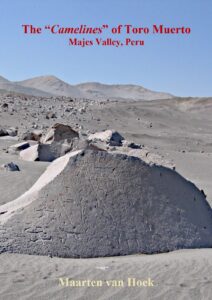




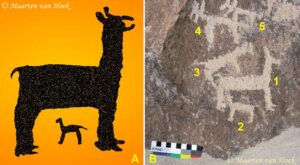
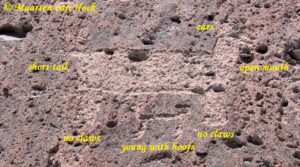

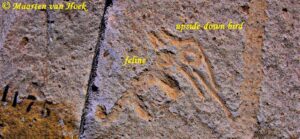

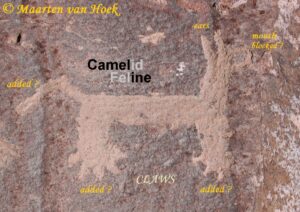
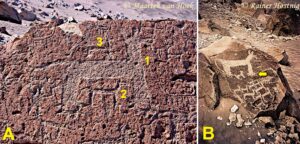
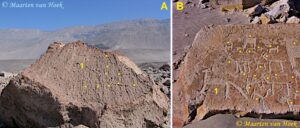

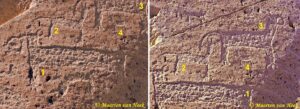

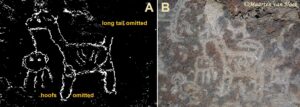

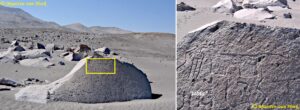
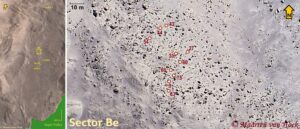














Leave a Reply